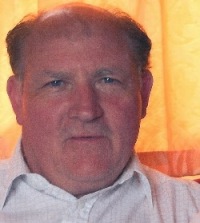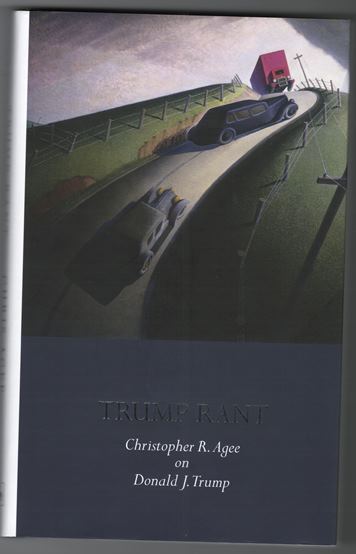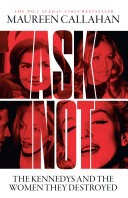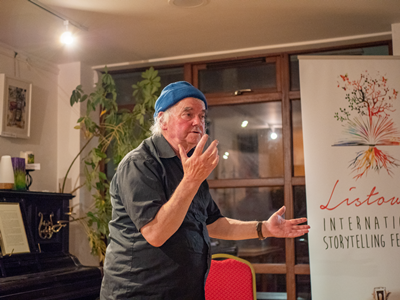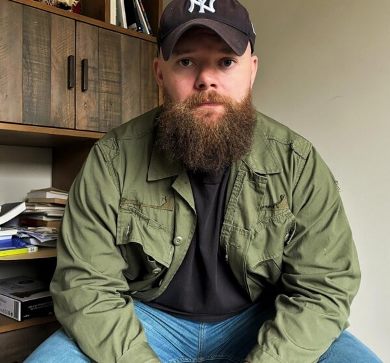
By
Melinda Cohenour
DNA as Used to Solve Cold Case Murders
Update: More charges for Rex Heuermann, known as the Gilgo Beach Serial Murderer or as LISK, the Long Island Serial Killer.
On July 13, 2023, law
enforcement members of an elite Task Force assembled to investigate the
mystery of four partially decomposed bodies known as the Gilgo Beach
Murders surrounded and arrested Rex Andrew Heuermann as he headed from
his office in downtown NYC to his home in Massapequa Park, Long Island,
NY. That arrest followed months of surveillance that culminated in
incriminating DNA evidence linking, indisputably, Heuermann to four of
the bodies shrouded in hunting style burlap fabric.
Columns published in PencilStubs
previously track the story from the instigating occurrence that
prompted the shocking discovery of these remains to the discoveries
revealed in court that tied Heurrmann to the first three victim's
killings. The columns also report on the discovery of seven additional
sets of remains, all believed to be related to murders by homicidal
violence and updates thereon provided by the prosecutor tasked with the
lead in Heuermann's ultimate trial.
Almost a full year following
that arrest, in April of this year 2024, the community of crime buffs
following the case was aroused by news of a large presence of LE and CSI
vehicles assembled near Schultz Road in the Manorville NY area. The
buzz indicated discovery of something critical, almost certainly linked
to the Gilgo Beach homicides. For twelve days the Internet excitedly
stirred speculation as to what had led the investigators to this new
activity and as to what was found. Finally, the story hit the news. One
publication reported as follows:
14:08 EDT 24 Apr 2024, updated 12:35 EDT 26 Apr 2024
By Bethan Sexton For Dailymail.Com
*. Cops reportedly sweeping wooded area in Manorville, New York
*. Suspect Rex Heuermann denies murder of 'Gilgo Four'
*. Victims found buried on stretch of Long Island beach more than 10 years ago
A new search is underway in connection to the Gilgo Beach murder investigation, according to police sources.
Detectives began searching a wooded area in Manorville, New York on Tuesday, with the sweep continuing through Wednesday.
The Suffolk County District Attorney's Office declined to comment to the outlet on the specifics of the search.
Rex Heuermann, 60, is charged with murdering four female sex
workers whose bodies were found buried on a remote stretch of Gilgo
Beach more than 10 years ago.
He was arrested in July and initially charged with killing
Melissa Barthelemy, 24, Megan Waterman, 22, and Amber Lynn Costello 27.
~~~~~~~~~~~
CBS NEWS reported on the search as well:
Local News
Gilgo Beach murders lead investigators to Manorville. "Notorious for people dumping bodies in there."
By Jesse Zanger, Alecia Reid, Jennifer McLogan
Updated on: April 25, 2024 / 1:58 PM EDT / CBS New York
MANORVILLE, N.Y. - The search for evidence in the Gilgo Beach murders case resumed Thursday.
Authorities with the Suffolk County Police Department, New York
Police Department and New York State Police continue to search an area
in Manorville. They could be seen with K-9s gathering evidence in the
woods.
"We do not comment on investigative steps while they are underway," Suffolk County DA Ray Tierney's office said in a statement Wednesday.
The statement added the office is working with the NYPD, Suffolk County Police and New York State Police as "investigative steps" continue.
Emergency services with K-9s were also seen Wednesday searching
the same wooded area near Schultz Road and Wading River Manor Road CBS
New York crews did not see if investigators unearthed or collected
anything.
"I heard that they've been there for three days already. Now, they have a wider search using cadaver dogs," said Michael Alcazar, an adjunct professor at John Jay College of Criminal Justice.
Police wrapped their search around 6 p.m. It's unclear if any evidence was found.
* Body parts previously discovered in Manorville
In 2000, partial remains belonging to Valerie Mack, who worked as an
escort, were discovered in Manorville, and in 2003, partial remains
belonging to Jessica Taylor, who also worked as an escort, were also
discovered in Manorville.
Additional remains of both Mack and Taylor were also found near Gilgo Beach.
Gilgo Beach murders suspect Rex Heuermann has not been charged in those two cases.
"They're going to look at the method and the way that these
women were murdered and try to attach it to him to see if it fits. It's a
puzzle," said Manny Gomez, a retired FBI agent and former NYPD sergeant.
Experts say a case of this magnitude will take a very long time
to investigate, and may even uncover crimes unrelated to the accused
Gilgo Beach serial killer.
"Manorville, where they're searching, is notorious for people
dumping bodies in there, so I wouldn't be surprised if they uncover
other bodies that might not necessarily be related to Gilgo," Alcazar said.
~~~~~~~~~~~
Shortly after this search effort hit the
news, DA Ray Tierney held a press conference to address the many
inquiries arising. The case is so notorious news outlets around the
world carry the latest information as it is released.
~~~~~~~~~~~
]
NBC NEWS: 5 June 2024
Alleged Gilgo Beach killer to face additional charges in deaths of two victims: <
The Thursday court hearing follows a series of recent searches, both
at the architect's Massapequa Park home and in a wooded area of
Manorville, where remains linked to the case were found more than a
decade ago
By Greg Cergol and Jennifer Millman • Published June 5, 2024 • Updated on June 5, 2024 at 10:16 pm
The New York City architect arrested in connection with a string of
bodies found on Long Island's Gilgo Beach is expected to be arraigned
Thursday and face additional charges related to the deaths of two
victims, sources with knowledge of the investigation confirmed.
Accused serial killer Rex Heuermann is scheduled for a 9:30 a.m.
arraignment on the new charges. The names of the victims were not
specified.
The indictment is sealed but an NBC News source described
Thursday’s arraignment and planned press conference at 11 a.m. by
Suffolk County District Attorney Ray Tierney as “huge” and
“game-changing” in the ongoing case against the 60-year-old former
architect.
When asked on Monday if Heuermann's upcoming court date
is the result of two recent searches, Tierney said, "It’s the result of
those and other investigative steps." However, the district attorney
would not confirm any new charges.
"There were a number of investigative steps that were taken...Thursday
you will see the fruits of that investigation," said Tierney.
News of the additional charges was first reported by Newsday.
~~~~~~~~~~~
In June of this year, 2024,
Heuermann was returned to court to face indictment for the murder of
additional victims. Leaked information indicated there would be two
victims named in the indictment. It had long been known two sets of
partial remains found on Gilgo Beach had been linked by DNA to cold case
victims Jessica Taylor and Valerie Mack. Both Taylor and Mack were
determined to have had dismembered torsos found years before in
Manorville.
Taylor's decapitated torso was
discovered in 2003. Her skull, two hands and a forearm were discovered
on Gilgo Beach in 2011. DNA analysis later led to the discovery of her
identity.
Mack's dismembered torso was
discovered in Manorville in November of 2000. DNA examination of
skeletal remains (a head, right foot and hands) discovered on Gilgo
Beach April 4, 2011, tied the two cases together; however, it was not
until May 28, 2020 the victim was identified as Valerie Mack. Mack had
last been seen by her family sometime in the spring or summer of 2000
somewhere in the vicinity of Port Republic, New York.
Broad speculation, therefore,
was that the two victims would be the only two Gilgo Beach victims who
shared commonality with Manorville: Jessica Taylor and Valerie Mack.
The huge surprise disclosed in Court
was the naming of a victim whose death occurred in 1993, her body
discovered in the woods by two hunters in North Sea. Found splayed on
her back, partially clothed, Sandra Castillo's corpse had been abused by
more than two dozen sharp force injuries believed to have been imposed
post mortem.
The second victim named in Heuermann's latest indictment was, as anticipated, Jessica Taylor.
Both victims were tied to
Heuermann by forensic testing of strands of hairs found "on or near" the
women's remains. The DNA tests determined those hairs matched
genetically to Heuermann, his immediate family members, or to persons
who had shared an abode with him. The tests that revealed Heuermann
himself to have been the donor excluded 99.96% of the North American
population – but could not exclude Heuermann.
DA Ray Tierney announced the
Task Force charged with investigating the Gilgo Beach Murders will also
pursue cold cases (presumably those where indications are they may have
been perpetrated by Heuermann). The Task Force is also working to
identify the remaining sets of partial remains located on Gilgo Beach:
among them - the victim known as Peaches (an African American female
whose dismembered torso was found shortly after death and bore a
distinctive tattoo of a peach before her partial remains were located on
Gilgo Beach; the skeletal remains of an infant linked by DNA analysis
as Peach's child, and an Asian American genetic male who had worn
women's apparel at time of death.
What was not disclosed either in
court or among documents filed by the prosecution was what evidentiary
discovery prompted the recent search that resulted in the indictment for Sandra Castillo.
The bail application provided
information that was of macabre interest. The discovery of a "planning
document" created by Heuermann about 2000 originally but modified
subsequently. It detailed methods to be used to avoid detection (such as
a reminder to always buy gas with cash, locations of roadside cameras,
avoidance of use of credit cards, destruction of photos, and so forth)
and ways to keep victims alive for prolonged torture sessions and means
to muffle sounds, a reminder that "small is good" and a personal
admonishment to strike first blow with more force.
It was left to speculation as to
what triggered that Manorville search although Tierney was quoted as
saying, "Officials have recovered a large amount of technology from the
residence, including 15 cameras, 27 computers, 46 cell phones and over
30 hard drives."
This monster becomes more
ghoulish with each finding of his twisted, evil mind and the detestable
ways in which he satisfied his sick needs.
Your author shall continue to track news of Rex Heuermann's case as it progresses.
In the meantime, I hope to return to the much more enjoyable pursuit of my ancestors and their lives.
Click on the author's byline for bio and list of other works published by Pencil Stubs Online.
This issue appears in the ezine at www.pencilstubs.com and also in the
blog www.pencilstubs.net with the capability of adding comments at the
latter.





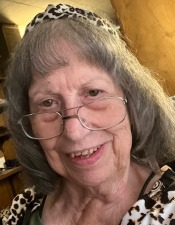

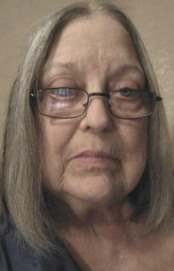 By
By 
